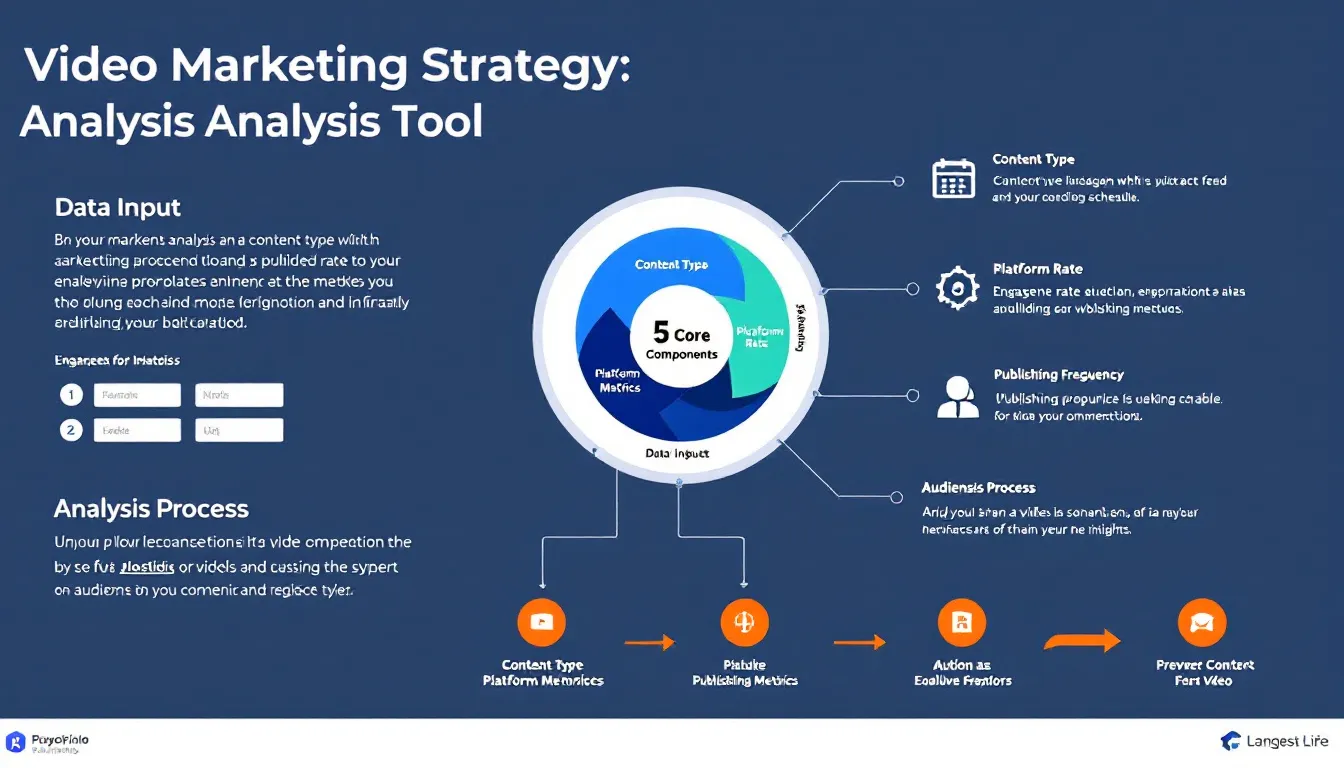Is this tool helpful?
How to Use the Video Marketing Competitor Analysis Tool Effectively
This tool helps you evaluate your video marketing strategy alongside your competitors. By filling in each section accurately, you obtain actionable insights to enhance your video campaigns. Here’s how to complete the form fields effectively:
1. Company Name
Enter the official name of your company. This helps contextualize your analysis. Examples:
- BrightWave Digital
- Urban Garden Co.
2. Current Video Content
Briefly describe your existing video marketing efforts, including formats and themes. Examples:
- Weekly product highlights and customer testimonials shared via Instagram Stories.
- Monthly educational webinars published on YouTube and LinkedIn.
3. Competitors to Analyze
List your primary competitors separated by commas. Include direct and indirect competitors for a comprehensive view. Examples:
- FreshBite Organics, NutriLife Supplements, PureHealth Labs
- Streamline Tech, InnovApp Solutions, CodeCraft Studio
4. Industry
Specify your industry to tailor the analysis results. Examples:
- Renewable Energy
- Mobile App Development
5. Platforms to Analyze (Optional)
Mention social media platforms where you want the competitor videos analyzed. This helps focus insights on relevant channels. Examples:
- Pinterest, Facebook, Twitter
- YouTube Shorts, Snapchat, LinkedIn
What is the Video Marketing Competitor Analysis Tool?
This tool evaluates your video marketing strategy by comparing your efforts against competitors within your industry. It aggregates performance data across various platforms to highlight strengths, weaknesses, and opportunities in your video campaigns.
By analyzing competitor video content, posting frequency, and audience engagement, you gain competitive intelligence crucial for improving your own video marketing tactics. The tool supports data-driven decisions that save time and enhance campaign effectiveness.
Key Benefits of the Video Marketing Competitor Analysis Tool
1. Gain Competitive Insights
- Understand popular video formats and themes in your sector
- Discover where competitors focus their video distribution
- Identify engagement trends like likes, shares, and comments
- Spot untapped content opportunities to differentiate your brand
2. Improve Strategic Planning
- Optimize your video content calendar based on competitor activity
- Allocate resources more effectively for better ROI
- Tailor platform-specific strategies using competitive benchmarks
- Align video formats with audience preferences observed in your market
3. Optimize Video Performance
- Benchmark key metrics such as engagement rates and view duration
- Adjust publishing schedules to maximize reach and impact
- Refine content themes proven effective in your industry
- Boost audience retention and conversion through targeted insights
Practical Uses of the Video Marketing Competitor Analysis Tool
Use this tool whenever you need to refine your video marketing strategy or measure your standing in the market. Here are some typical scenarios:
Marketing Campaign Planning
Compare competitors’ video campaigns to identify the best content types and publishing times in your industry. This reduces guesswork and improves campaign effectiveness.
Content Strategy Development
Analyze what kind of video content resonates with your audience by reviewing competitor engagement trends. Use this information to diversify your video formats and improve audience interaction.
Performance Tracking and Benchmarking
Measure your video marketing progress against industry standards and competitors. Use insights to adjust your approach for steady growth and improved results.
Frequently Asked Questions About Video Marketing Competitor Analysis
How often should I analyze video marketing strategies?
Run the analysis at least once every three months to stay updated on market shifts and competitor moves. Conduct additional reviews when launching products or entering new markets.
Which video platforms should I focus on?
Choose platforms where your target audience spends time. These will vary based on your industry and customer demographics, such as TikTok for younger audiences or LinkedIn for B2B markets.
What key metrics does the tool analyze?
The tool focuses on engagement rate, view duration, video format distribution, posting frequency, and audience feedback like shares and comments.
How can I use competitor data to improve my videos?
Identify themes and styles that perform well, then adapt those elements to your brand’s voice. Adjust posting schedules and content length according to successful competitor patterns.
Should I include global competitors in the analysis?
If you operate internationally or plan to expand, including global competitors gives you diverse insights and helps anticipate market trends beyond your region.
How do I measure video marketing ROI?
Track conversions, lead generation, sales influence, and brand awareness alongside your resource investments. Compare these numbers with industry benchmarks identified through the tool.
What types of video content should I analyze?
Focus on a broad range of formats such as product demos, webinars, brand storytelling, tutorials, testimonials, and live videos to find what works best in your niche.
How do I adapt competitor strategies for my brand?
Extract the core elements of successful videos, then tailor the messaging, style, and delivery to fit your audience and brand identity without copying exactly.
Important Disclaimer
The calculations, results, and content provided by our tools are not guaranteed to be accurate, complete, or reliable. Users are responsible for verifying and interpreting the results. Our content and tools may contain errors, biases, or inconsistencies. Do not enter personal data, sensitive information, or personally identifiable information in our web forms or tools. Such data entry violates our terms of service and may result in unauthorized disclosure to third parties. We reserve the right to save inputs and outputs from our tools for the purposes of error debugging, bias identification, and performance improvement. External companies providing AI models used in our tools may also save and process data in accordance with their own policies. By using our tools, you consent to this data collection and processing. We reserve the right to limit the usage of our tools based on current usability factors.







